GALLERY
Romeo & Juliet
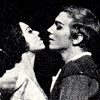
Spartacus
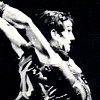
Spartacus
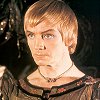
Romeo & Juliet
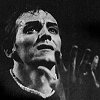
Legend of Love
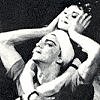
Maris Liepa
Maris Liepa was born in Riga, Latvia on 27 July 1936 and began his ballet training in his hometown (1947-1953).Whilst still a student he was also an avid swimmer and became national champion in 1954, holding on to his title for a further two years. In 1953 the renowned ballet teacher Nikolai Tarassov took a holiday in Riga. He had read about the young Liepa winning a swimming contest and noticed that he was also a student at the ballet school there. Tarassov saw a performance of Romeo and Juliet in which Liepa took the role of one of the troubadours. He was impressed by the young man and invited him to finish his studies in Moscow. In the Autumn of that year he transferred to Moscow to complete his studies at the Moscow Choreographic Institute under Tarassov's guidance.
He performed in many school concerts and immediately made a dramatic impact in character numbers, particularly the Spanish dance from Vainonen's Nutcracker with Larissa Trembovelskaya. However Tarassov was able to create a complete classical dancer from this ebullient dramatic personality. He graduated with a performance of Don Quixote pas de deux and working with his partner's teacher Maria Kozhukova he perfected his partnering skills at a very early age, delighting the graduation audience with some fine dancing and exciting lifts.
Liepa went back to Riga on graduation and danced a variety of new ballets enjoying a particular success as Tots in The Jewel of Liberty. His dream however was to return and dance in Moscow. He received an invitation to dance in Budapest as part of a festival of Russian-Hungarian Culture and on 9 March 1956 danced his first Siegfried in Swan Lake partnering the distinguished ballerina, Maya Plisetskaya. He also had a great success dancing Vaslav in The Fountain of Bakhchisarai. When in 1956 the troupe of the Stanislavsky Ballet from Moscow was giving guest performances in Riga, Liepa put himself forward to audition, partnering two of the leading ballerinas Violetta Bovt and Sofia Vinogradova. The director Vladimir Bourmeister immediately accepted him into the company where he would stay for four years.
His roles at the Stanislavsky included Siegfried in Swan Lake, Lionel in Joan of Arc, Feb in Esmeralda, and Conrad in Le Corsaire. The last role was an immense success and in 1960 he joined the Bolshoi Theatre.
In 1961 Lavrovsky staged his ballet Night City especially for the talents of Liepa. This was indeed a very creative time for Liepa and he appeared in several contemporary ballets as Georgi in Pages of Life and Lenny in The Path of Thunder.
But in 1964 Yuri Grigorovich came to the Bolshoi and here began a very fruitful partnership, which resulted in two particularly important roles for Liepa. The first was Ferkhad in Legend of Love in 1965 and his superb Crassus in Spartacus in 1968. In fact he started rehearsing the title role. The original intention had been to create a more dramatic character role from Crassus but together with Grigorovich an entirely different stage role was created. This was the absolute pinnacle of Liepa's stage career drawing rave notices all over the world; "The Olivier of the dance" as the English ballet-critic Richard Buckle called him. The immense emotional storm created by his partnership with Nina Timofeyeva in Spartacus will probably not be equalled.
Many assessments of Liepa primarily concentrate on his dramatic abilities as an actor but this is perhaps unfair as he was an extremely gifted and well schooled classical dancer. He had a solid technique and clarity in execution of classical steps. This made him a very successful Desiré in Sleeping Beauty and also a fine Siegfried in Swan Lake and Jean de Brienne in Raymonda, as well as a lively Basil in Don Quixote. However the fusion of acting and dance within the classical vocabulary found its best in Liepa as Albrecht in Giselle. He partnered most of his ballerina contemporaries in Moscow in this role, particularly Ekaterina Maximova, Nina Timofeyeva and Natalia Bessmertnova. However, the most renowned partnership in his home theatre was with Marina Kondratieva. They performed many ballets together and had a special rapport on stage.
He was always seeking new creative challenges. He also produced a number of ballets within Russia and staged Spectre de la Rose at the Bolshoi Theatre in 1967 dancing with Bessmertnova. In Maya Plisetskaya's Anna Karenina he played Vronsky and Karenin. He retired from the Bolshoi in 1984 and led the Sofia Ballet in Bulgaria in 1984-5.
He was very drawn to acting and made several films of dramatic roles, which made him well known across the Russian-speaking world. A ballet film Galatea based on My Fair Lady in which he starred with Ekaterina Maximova proved extremely popular.
As a dancer Maris Liepa was a great individualist, fusing drama and dance with complete success. A highly intellectual performer, he went to great pains to achieve depth in his interpretations. However because of his great theatrical qualities these never seemed to be studied or self-conscious. He had spontaneity and each of his roles very much "lived" on the stage.
Sadly there is little documentary evidence of his dancing apart from the complete filmed version of Spartacus. But this is a wholly satisfying record encapsulating all his qualities as a dance actor.
Maris Liepa was honoured with a Lenin Prize for his portrayal of Crassus. Moreover, he was awarded the title of People's Artist of the USSR in 1976. From the Paris Academy of Dance he received the Nijinsky Prize in 1971 and the Marius Petipa Prize in 1977.
He died in Moscow on 26 March 1989. His two children Andris and Ilze Liepa have enjoyed successful careers, also branching out from the traditional role of ballet dancer by exploring other avenues of theatrical creative work.
Geoff Whitlock
His repertoire includes:
With the Theatre Of Opera and Ballet, Riga- Tots in Jewel of Liberty (Changa) (1955)
- soloist in Grand Pas from Raymonda (1955)
- Nikita in Laima (Tangieva-Birzniek) (1955)
- Pas d'Esclave in Le Corsaire (1956)
With the Stanislavsky Theatre, Moscow
- Siegfried in Swan Lake (1956)
- Feb in Esmeralda (Bourmeister after Perrot, Petipa)
- Lionel (cr) in Joan of Arc (Peiko) (1957)
- Conrad in Le Corsaire (1957)
- Sinbad in Scheherazade (Bourmeister) (1958)
- The Poet in Straussiana (Bourmeister) (1959)
- Chaban (cr) in The Fairy of the Forest (Chichinadze) (1958)
With the Bolshoi Ballet, Moscow
- Basil in Don Quixote (1960)
- Lenny in The Path of Thunder (Sergeyev) (1960)
- The Youth (cr) in Night City (Lavrovsky) (1961)
- Bacchus in Walpurgis Night (Lavrovsky) (196&)
- Albrecht in Giselle (1961)
- Siegfried in Swan Lake (Gorsky, Messerer) (1961)
- title role in Spartacus (Jakobson) (1962)
- Georgi (cr) in Pages of Life (Lavrovsky) (1962)
- Armen in Gayaneh (Vainonen) (1962)
- The Youth in Chopiniana (1962)
- Prince in Cinderella (Zakharov) (1963)
- Jean de Brienne in Raymonda (Lavrovsky after Petipa) (1963)
- Romeo in Romeo and Juliet (Lavrovsky) (1963)
- Desiré in The Sleeping Beauty (Grigorovich after Petipa) (1963/1974)
- Ferkhad in Legend of Love (Grigorovich) (1965)
- Vaslav in The Fountain of Bakhchisarai (Zakharov) (1967)
- title role in Le Spectre de la Rose (1967)
- Crassus (cr) in Spartacus (Grigorovich) (1968)
- title role in Hamlet (Kamkov) (TV Film, 1969)
- Siegfried in Swan Lake (Grigorovich) (1970)
- Vronsky (cr), Karenin in Anna Karenina (Grizhenko, Smirnov-Golovanov, Plisetskaya) (1972, 1976)
- Claudio in Love for Love (Boccadoro) (1976)
- Don José in Carmen suite (1976)
- Prince Lemon in Chippolino (Maiorov) (1977)
- Higgins in Galatea (Briantzev-Belinsky) (TV Film, 1978)
- Soloist in Those Charming sounds (Vasiliev) (1978)
- Hans in Giselle (1979)
- Ragozhin in The Idiot (Eifman) (1981)
- King Florestan and Carabosse in The Sleeping Beauty (1984)
- soloist in Sylvia pas de deux (Ashton)
Copyright © 2002
Text of Maris Liepa Copyright © 2002 Geoff Whitlock. All rights reserved.